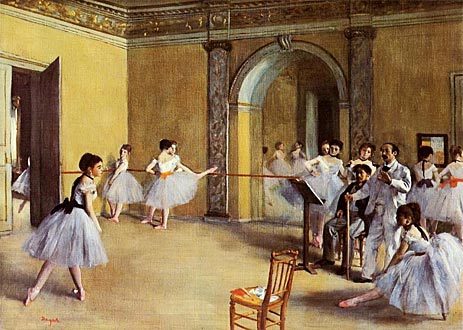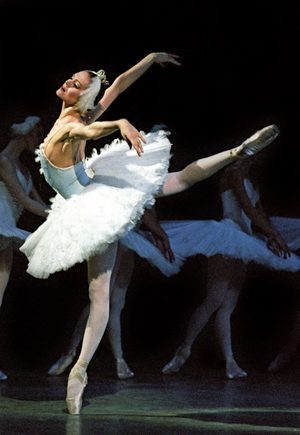Tools of the trade: Ballet #12 – Tutu
The tutu is one of the unique trademarks of ballet, hence deserves it’s own Tools of the Trade-post. It is in fact a skirt, or more correctly, several skirts, and has followed the development of ballet since it’s early days. And guys, do I really need to say that, like the pointe-shoe, it’s worn by women?! Come on, skirts? What do people think of us men in ballet?
The Pas de Quatre, an iconic piece made for the four leading ballerinas at the time, all wearing romantic tutu’s. The biggest star of them all, Marie Taglioni (Center) is acclaimed to have, if not invented the romantic tutu, at least credited for it’s popularity. London, 1845.
The tutu-s you see today are really quite different from those of the early days of ballet, but some romantically ballets (like in the second act of Giselle) still uses the old-fashioned ones, called Romantic Tutu’s. It’s also fairly regular to see the corps de ballet dressed up in romantic tutu’s. It’s made to be flowing and light, and give the impression that the ballerina is elevated us regular people, she is almost ethereal. This illusion was also the reason why they started using pointe-shoes (and some really stupid flying-machines) in the first place, read more about that in my post about the history of the pointe-shoe.

Edgar Degas’ ballerinas were all wearing the bell-tutus
After a while, the ballerina’s technique started getting better, especially their jumps and batteries – beating with their legs while jumping. The romantic tutu was simply too long and heavy for this, something needed to be done. The bell-shaped tutu was born. This skirt was similar to the romantic one, except it was shorter and stiffer, allowing the ballerina to move faster, and showing her intricate footwork. It was still long enough to cover her knees, though, to keep the skirt appropriate.

The great ballerina Ulyana Lopatkina is wearing what we’d call a “modern” classical tutu, performing the role of Odette from Swan Lake
The tutu we see on stage today is a very stiff skirt sticking straight out from the waist of the ballerina, popularly called the pancake-tutu. It is built up by several layers of net and a wire hoop, with tulle tacked around them, to keep the layers of the skirt still while the ballerina is dancing. Some dancers say the skirt helps them while performing pirouettes, claiming that the stiff skirts adds a balance-leverage around the body. I wouldn’t know if this is true, as I am a guy, and have never worn a tutu (well, there was this one time, but let’s not talk about that..)
William Forsythe made a ballet called The Vertiginous Thrill of Exactitude, with some pretty distinct tutus in it
In more modern times, we have seen a million variations of the classical tutu’s I have mentioned , but the ones above remain the basic versions. Maybe some day, the futuristic take on the tutu we see in ballets like William Forsythe’s ‘The Vertiginous Thrill of Exactitude will make yet another chapter in some blokes ballet-website…
Discover more Tools of the Trade
And if you happen to think the Tutu is a pretty bizarre thing to wear, I totally agree – no idea whatsoever as to who thought of this ufo-like skirt to wear, but it looks kinda cool. In a strange way.. Share your thoughts on the tutu in the comments section below ![]()


